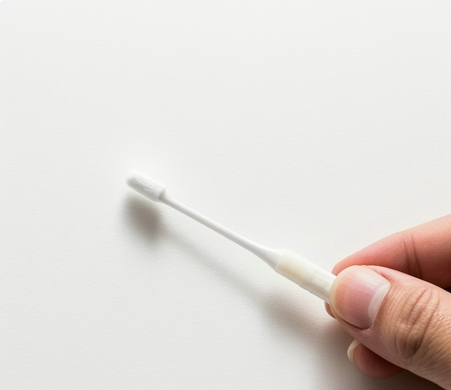
News and Blogs
Why is oral swab the first choice for paternity testing? An authoritative guide to oral swab DNA sampling
Modern paternity testing technology mainly includes three major categories of methods: serological detection, chromosomal morphology analysis and DNA typing. Among them, serological testing was excluded through the ABO blood type system, and the accuracy of parent-child relationship confirmation was only 60-70%, which has been gradually eliminated. The identification of chromosomal polymorphisms depends on morphological observations under the microscope by technicians, and there is a risk of subjective misjudgment of 20-30%.
The current internationally common gold standard is STR genotyping technology. By aligning 16-24 short tandem repeat sites, the accuracy of parent-child relationship confirmation can be improved to more than 99.99%. The detection samples have a wide range of choices, including blood, hair follicles, oral mucosal cells and bone tissue. It is worth noting that the use of oral swabs to collect oral shed epithelial cells has become a non-invasive sampling method recommended by more than 85% of judicial identification agencies around the world.
Oral swab sampling has significant advantages: using professional sterilized cotton swabs to wipe the buccal mucosa for 10–15 times, you can obtain about 1 million intact cells, and their DNA content can reach 0.5-1μg, which fully meets the PCR amplification needs. Compared with the need for professional medical staff to operate intravenous blood collection, oral swabs can be completed by the subject themselves, especially suitable for infants and people with dizziness. A study in the 2019 Journal of Forensic Science showed that the success rate of STR typing of oral swab samples collected standardized can reach 98.7%, which is completely consistent with the blood leukocyte test results.
In specific application scenarios:
- Oral swabs are recommended for routine individual identification. This method has passed the ISO international standard certification (ISO 18385:2016) to avoid skin trauma caused by blood collection.
- Children under 5 years old are not fully developed due to incomplete hair follicles, it is recommended to choose oral swabs or heel blood collection. The detection rate of single hair DNA is less than 40%.
- Recipients of blood transfusion or bone marrow transplantation should pay special attention. Foreign DNA will contaminate blood samples. At this time, oral mucosal cells can better reflect the individual's true genetic information.
In response to doubts about sample accuracy, the American Society of Genetics (ASH) clearly states that all somatic nuclear DNA in the human body is homology, like different printed versions of the same book. Whether it is the white blood cells or the oral mucosal cells, the genetic code they contain is completely consistent. The world's top laboratories adopt a 16-point dual testing process, and cooperate with quality control reference materials to ensure that the test results are not affected by the sample type.
It is worth adding that standardized oral swab collection requires attention to fasting 1 hour before sampling to avoid chemical components in the beverage interfering with DNA extraction. The professional sampling set usually contains 3 flocking swabs, which adopts patented nylon fiber technology, which improves cell adsorption efficiency by 30% compared to traditional cotton swabs. This innovative design allows home sampling to meet laboratory-level standards, promoting paternity testing technology to a safer and more convenient direction.






